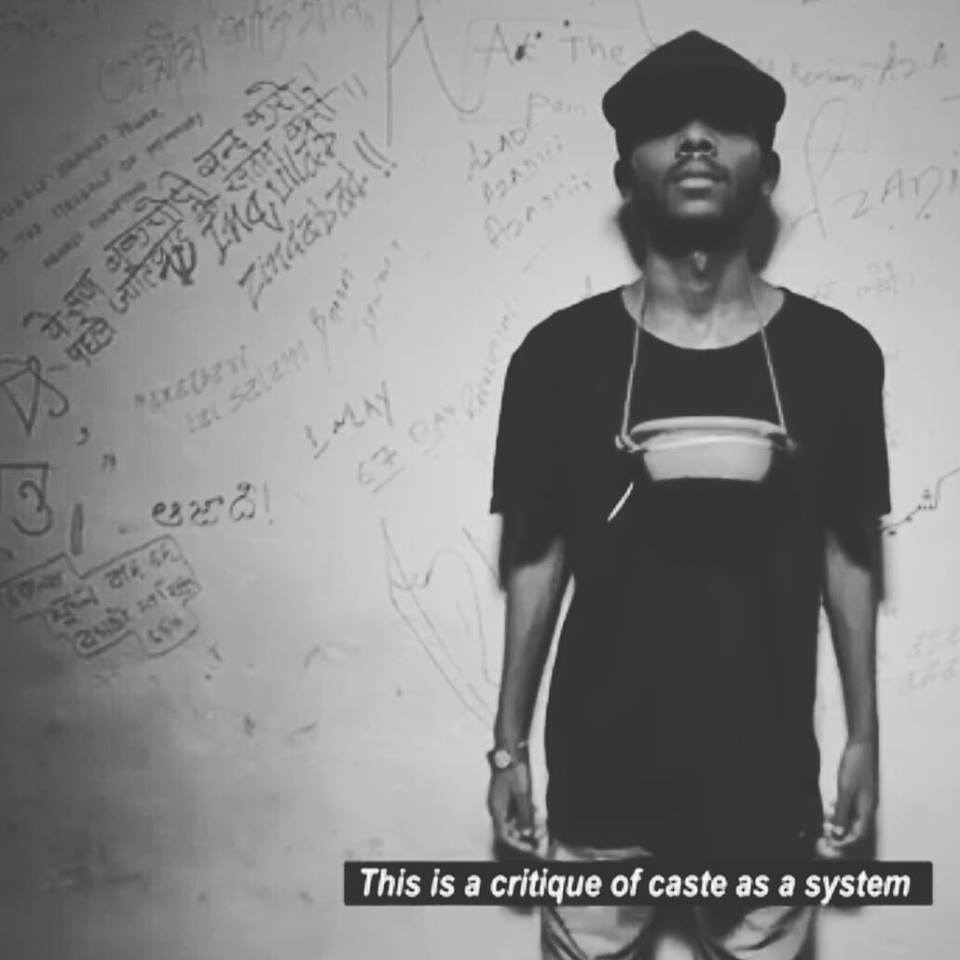Watch: Odisha Rapper’s Take On Caste Discrimination

Bhubaneswar: What started as a game commentary in 1973 at a DJ party in New York, turned into a genre of music that legendary artistes such as Tupac Shakur, Eminem and ‘Ice Cube’ began to start a movement against oppression, especially racism.
Stepping in the same direction, Sumeet Samos, a 24-year-old rapper from Odisha’s Koraput district decided to follow what Tupac Shakur had once said, ‘Life is a wheel of fortune and it’s my turn to spin it’.
He raps to raise his voice against caste discrimination. He says the world might “hate me, denigrate me, label and rate me,” but he has “seen enough for you to ever try and break me.” A few days ago, popular Facebook page Brut India that features the stories of extraordinary personalities across the globe, uploaded an interview with Sumeet Samos, who they wrote, “is rapping caste on the knuckles”.
Brut India spoke to this Dalit JNU student who is rapping caste on the knuckles ??
Posted by Brut India on Sunday, 22 July 2018
He also collaborated recently with Facebook page Qweed Media for a video titled ‘Ladai Seekh Le’. The trailer released earlier this week. This song talks about all forms of atrocities committed against Dalits in Laxmanpur, Mirchpur, Una and other places.
“I have pointed out caste-based discrimination in educational institutions that led to the death of many Dalit Bahujan. Besides, I also mention how falling in love out of caste is a crime. So many Dalit men have been killed because they loved a woman from so-called higher castes and I wonder how one section of the society decides who is supreme or inferior,” Sumeet said.
Ladai Seekh Le by Sumit Samos- Teaser
Hip-Hop has always been a medium to express the anguish and pain of communities that are being exploited. Sumeet Samos spits the experiences and anecdotes of being a Dalit in Modern India.
Posted by Qweed Media on Tuesday, 24 July 2018
Great ??? https://t.co/LdftiFay9o
— pa.ranjith (@beemji) July 26, 2018
“The forms of caste system manifestation range from being subtle in everyday life to being violent in physical forms. Apart from that, the caste system is intertwined with questions of land, labor, representation, education, health, gender, socio-cultural institutions, media, bureaucracy and judiciary. Which are the land-owning castes? Who work as landless labourers for these castes? Very often people from Hegemonic castes want to understand caste merely in terms of everyday behavior among the marginalized castes,” he said.
In his rap “Suno Suno Odisha Ro Kotha”, he describes the caste system in Odisha.
https://youtu.be/UyeaU6NpYAY
“As a kid, I faced severe caste discrimination. I was looked down upon, mocked, ridiculed but I decided to fight and chase my dreams,” he said. He studied in a government school in Koraput’s Tentulipadar village. “All my study expenses were met by neighbours,” he added.
He stepped out of Koraput after his schooling and reached Delhi in search of work. “I worked at an eatery and got to know about Jawaharlal Nehru University. It was then that I thought of pursuing my dreams and studying more. I cleared the entrance exam and got into the university,” Sumeet said.
“To be able to stand up against any hegemony one needs to be conscious and critical. For me, this consciousness is something I learn from being in the Ambedkarite student movement. I want this to pass on to the marginalized sections through my raps, so that they are aware of their own history which has been distorted,” Sumeet said.

Comments are closed.